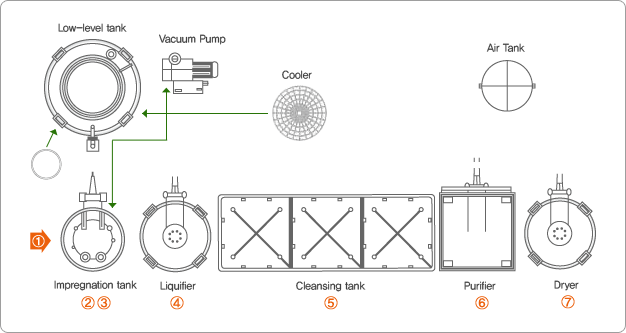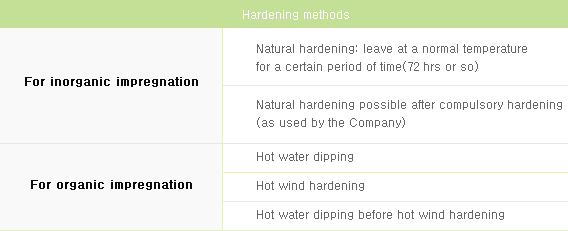| |
|
|
|
|
|
 |
 HOME > Business > Workflow HOME > Business > Workflow |
|
|
|
| |
| |
 |
| |
 |
| |
 |
| Impregnation usually occurs after processing, possibly leaving cut oil, oil, and chips, so to guarantee good effect, it is desirable to completely remove remaining moisture by cleansing at 60℃~70℃. Aluminum alloy, zinc alloy, Magnesia alloy, and iron alloy, in particular, may get corroded even around neutral substances, so be sure to cleanse right after the treatment and remove moisture. |
| |
 |
| At this state, put the defective product into the impregnation tank and then make the tank in the vacuum state. We comply with the MIL requirements of the U.S. Department of Defense. This stage is necessary a) to remove remaining air and volatile substances in the pores and b) make it easier for the impregnation solution to enter. |
| |
 |
| Pressurize the impregnation tank housing the impregnation solution and leave it for some time. It is inversely proportional to the square root of viscosity of the solution and directly proportional to both the square root of pressurization time and pressure, respectively. In recent years, organic impregnation solutions do not need pressurization, and conglomerates often use solutions well infiltrating to defective products. |
| |
 |
| At this state, the solution is returned before cleansing remaining solution on the product surface, to save money and use cleansing water for a longer period. This process is very important since it is directly related to the environment. |
| |
 |
| Cleansing needs care because it has a significant effect on the appearance of the product. Depending on the form and commercial value of the product, cleansing method and period vary. Be sure to cleanse completely remaining solution because there should be no remnant of the solution except for defective pores in any case. |
| |
 |
| At this stage, moisture remaining after cleansing is removed, and the product is dried, while allowing the solution in the pores to get hardened gradually from around the defect. In case of organic impregnation, we use hot water hardening, and therefore heat conductivity is very important. At present, we have no problem, as most metals are good in heat conductivity. |
| |
 |
| |
 |
| For organic impregnation, be sure to remove hot moisture after hardening and force it to be dried until moisture in and outside of the product completely disappears. |
|
|
|
| |
|
|
|
